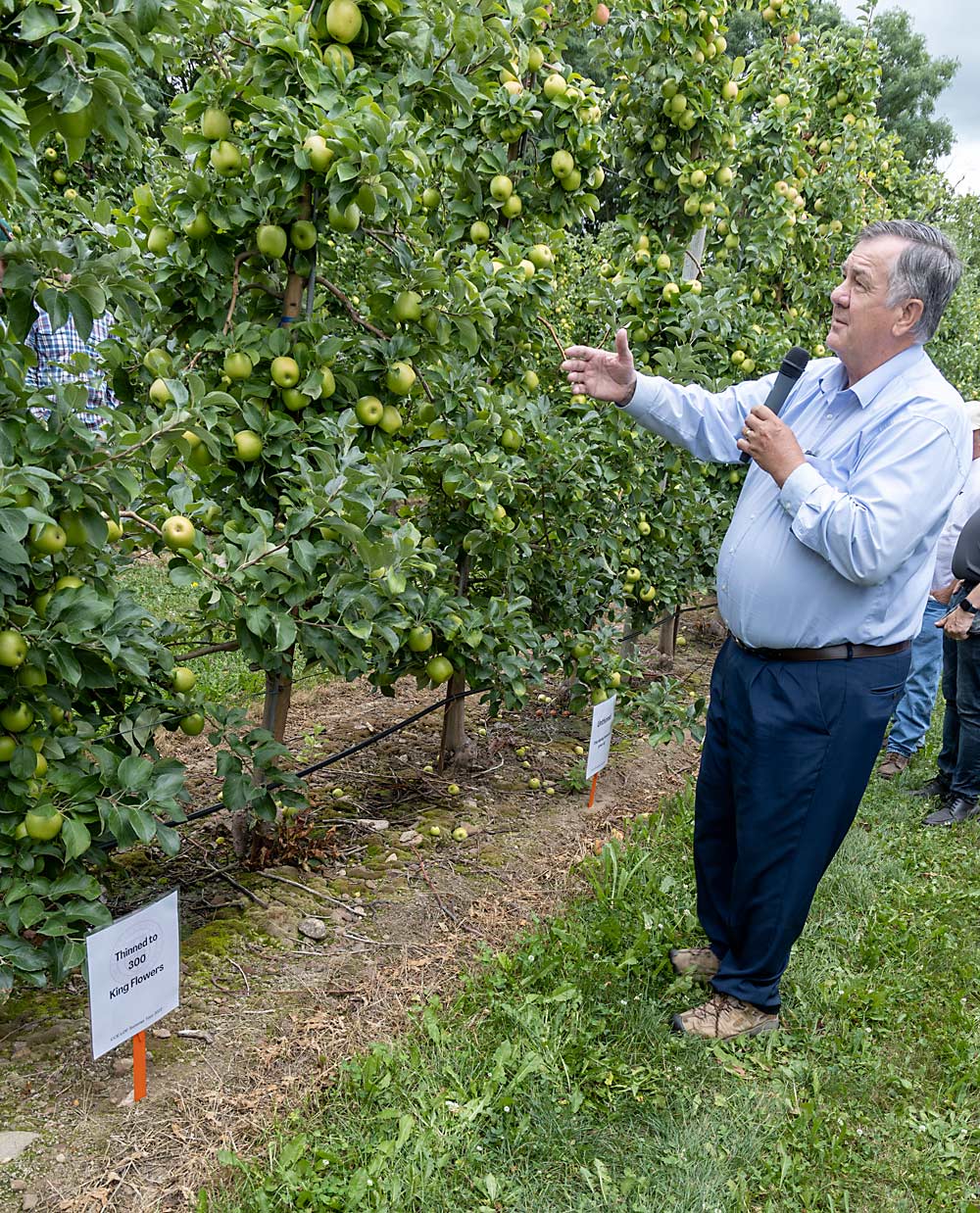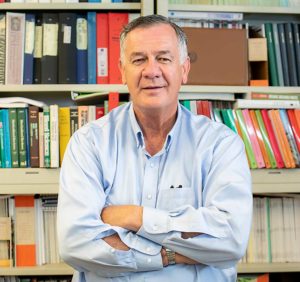
When people talk about crop load management these days, they tend to focus on new and intriguing tools, like computer vision technologies or the pollen tube growth model. Prosaic tasks like pruning? Not as much.
But precision pruning — reducing the number of flower buds to get closer to the target bud load — remains one of three crucial stages in the crop load management process, along with chemical and hand thinning, said Cornell University fruit crop physiologist Terence Robinson.
And being the first stage, it might be the most fundamental. Getting down to the final target crop load with just chemical thinning is extremely difficult, especially in a high flowering year. Pruning based on bud count beforehand can get you much closer, he said.
Under Robinson’s guidance, researchers are conducting precision pruning and other physiology trials as part of a crop load management project funded by a $5 million grant from the U.S. Department of Agriculture’s Specialty Crop Research Initiative. Trials are being conducted at multiple sites in New York, as well as in Michigan, Washington and North Carolina. The project also focuses on computer vision and robotics to help with crop load management.
Standing in a Honeycrisp block at Orchard Dale Fruit Co. last August, Robinson discussed precision pruning during Cornell’s Lake Ontario Fruit Summer Tour in Orleans County, New York.
“Whatever your spacing is, prune so that you leave flower buds to equal 1.8 or two times the final fruit number,” Robinson told the tour. “If you get the bud number down through pruning, then all the rest is more successful.”
Grower Robert Brown said the Honeycrisp block was planted in 2006 on Nic.29 rootstock, spaced 4 feet by 13 feet. He allowed Cornell researchers to conduct pruning trials in part of the block during tight cluster/pink stage in early May.
The research team pruned down to different bud numbers, seeking the optimum number for trees of that size and variety, said Cornell extension specialist Craig Kahlke. He said they want to repeat the experiment this year and take a closer look at effects on return bloom.
Data from the first year showed that pruning down to 150 to 200 buds on those trees, followed by chemical and hand thinning, will produce the most profitable Honeycrisp in terms of size, color and flavor, Robinson said.
Brown said his target fruit number per tree in that block is 125. He generally follows Cornell’s recommendations to prune to 1.8 to two times the target crop load, followed by thinning.
But it’s a tricky balance.
If you prune too close to the target, you might end up with oversize fruit, which can result in poor sales. Consumers in the past few years prefer smaller, bag-size Honeycrisp. On the other hand, if you prune to three to four times the target number, you end up with too many small apples and risk having no flowers the following year due to Honeycrisp’s biannual bearing tendency, Brown said.
Michigan State University tree fruit physiologist Todd Einhorn, who’s conducting similar pruning trials at MSU’s Clarksville Research Center as part of the SCRI project, is also exploring a potential relationship between bud size and final fruit size.
Past research in cherry has found that large buds result in large fruit, while small buds result in small fruit. Einhorn wants to find out if there’s a similar relationship in apple.
“If we’re trying to set precise crop loads of the most profitable or valuable fruit, then we need to know if the relationship exists between bud size and final fruit size,” he said. “That way we can get rid of small buds if they prove to have small fruit, and if they don’t, that’s one fewer thing we need to do in the orchard.”
—by Matt Milkovich







Leave A Comment